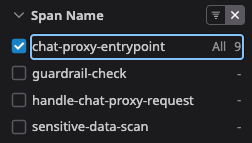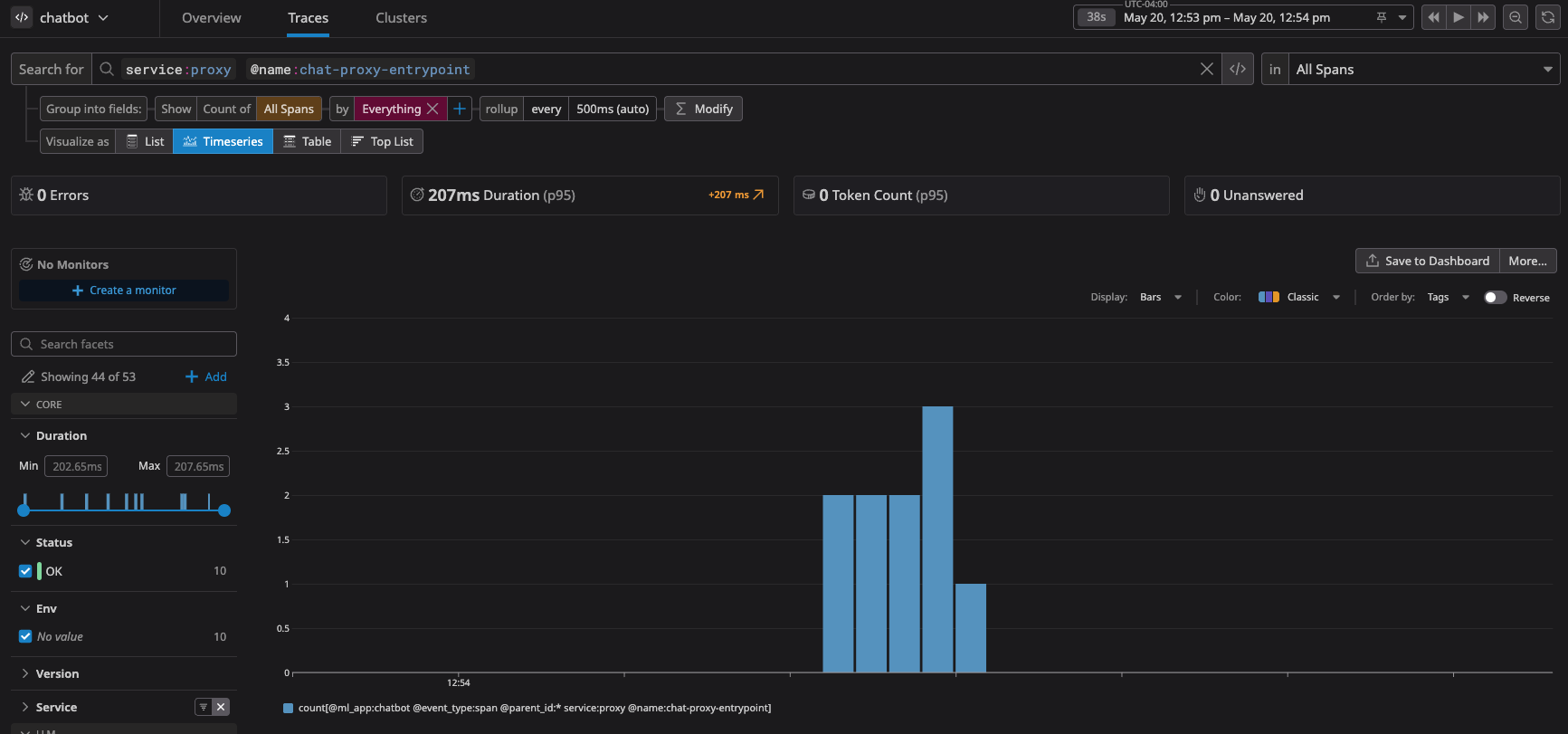- 重要な情報
- はじめに
- Datadog
- Datadog サイト
- DevSecOps
- AWS Lambda のサーバーレス
- エージェント
- インテグレーション
- コンテナ
- ダッシュボード
- アラート設定
- ログ管理
- トレーシング
- プロファイラー
- タグ
- API
- Service Catalog
- Session Replay
- Continuous Testing
- Synthetic モニタリング
- Incident Management
- Database Monitoring
- Cloud Security Management
- Cloud SIEM
- Application Security Management
- Workflow Automation
- CI Visibility
- Test Visibility
- Intelligent Test Runner
- Code Analysis
- Learning Center
- Support
- 用語集
- Standard Attributes
- ガイド
- インテグレーション
- エージェント
- OpenTelemetry
- 開発者
- 認可
- DogStatsD
- カスタムチェック
- インテグレーション
- Create an Agent-based Integration
- Create an API Integration
- Create a Log Pipeline
- Integration Assets Reference
- Build a Marketplace Offering
- Create a Tile
- Create an Integration Dashboard
- Create a Recommended Monitor
- Create a Cloud SIEM Detection Rule
- OAuth for Integrations
- Install Agent Integration Developer Tool
- サービスのチェック
- IDE インテグレーション
- コミュニティ
- ガイド
- Administrator's Guide
- API
- モバイルアプリケーション
- CoScreen
- Cloudcraft
- アプリ内
- Service Management
- インフラストラクチャー
- アプリケーションパフォーマンス
- APM
- Continuous Profiler
- データベース モニタリング
- Data Streams Monitoring
- Data Jobs Monitoring
- Digital Experience
- Software Delivery
- CI Visibility (CI/CDの可視化)
- CD Visibility
- Test Visibility
- Intelligent Test Runner
- Code Analysis
- Quality Gates
- DORA Metrics
- セキュリティ
- セキュリティの概要
- Cloud SIEM
- クラウド セキュリティ マネジメント
- Application Security Management
- AI Observability
- ログ管理
- Observability Pipelines(観測データの制御)
- ログ管理
- 管理
Trace Proxy Services
このページは日本語には対応しておりません。随時翻訳に取り組んでいます。
翻訳に関してご質問やご意見ございましたら、お気軽にご連絡ください。
翻訳に関してご質問やご意見ございましたら、お気軽にご連絡ください。
LLM Observability is not available in the selected site ().
Overview
Like traditional applications, an LLM application can span multiple microservices. With LLM Observability, if one of these services is an LLM proxy or gateway, you can trace LLM calls within a complete end-to-end trace, capturing the full request path across services.
Enabling LLM Observability for a proxy or gateway service
To enable LLM Observability for a proxy or gateway service used by multiple ML applications, you can configure it without specifying an ML application name. Instead, set the service name. This allows you to filter spans specific to that proxy or gateway service within LLM observability.
# proxy.py
from ddtrace.llmobs import LLMObs
LLMObs.enable(service="chat-proxy")
# proxy-specific logic, including guardrails, sensitive data scans, and the LLM call
// proxy.js
const tracer = require('dd-trace').init({
llmobs: true,
service: "chat-proxy"
});
const llmobs = tracer.llmobs;
// proxy-specific logic, including guardrails, sensitive data scans, and the LLM call
If you have a service that orchestrates ML applications which send requests to an LLM proxy or gateway, enable LLM Observability with the ML application name:
# application.py
from ddtrace.llmobs import LLMObs
LLMObs.enable(ml_app="my-ml-app")
import requests
if __name__ == "__main__":
with LLMObs.workflow(name="run-chat"):
# other application-specific logic - (such as RAG steps and parsing)
response = requests.post("http://localhost:8080/chat", json={
# data to pass to the proxy service
})
# other application-specific logic handling the response
// application.js
const tracer = require('dd-trace').init({
llmobs: {
mlApp: 'my-ml-app'
}
});
const llmobs = tracer.llmobs;
const axios = require('axios');
async function main () {
llmobs.trace({ name: 'run-chat', kind: 'workflow' }, async () => {
// other application-specific logic - (such as RAG steps and parsing)
// wrap the proxy call in a task span
const response = await axios.post('http://localhost:8080/chat', {
// data to pass to the proxy service
});
// other application-specific logic handling the response
});
}
main();
When the LLM application makes a request to the proxy or gateway service, the LLM Observability SDK automatically propagates the ML application name from the original LLM application. The propagated ML application name takes precedence over the ML application name specified in the proxy or gateway service.
Observing LLM gateway and proxy services
All requests to the proxy or gateway service
To view all requests to the proxy service as top-level spans, wrap the entrypoint of the proxy service endpoint in a workflow span:
# proxy.py
from ddtrace.llmobs import LLMObs
LLMObs.enable(service="chat-proxy")
@app.route('/chat')
def chat():
with LLMObs.workflow(name="chat-proxy-entrypoint"):
# proxy-specific logic, including guardrails, sensitive data scans, and the LLM call
// proxy.js
const tracer = require('dd-trace').init({
llmobs: true,
service: "chat-proxy"
});
const llmobs = tracer.llmobs;
app.post('/chat', async (req, res) => {
await llmobs.trace({ name: 'chat-proxy-entrypoint', kind: 'workflow' }, async () => {
// proxy-specific logic, including guardrails, sensitive data scans, and the LLM call
res.send("Hello, world!");
});
});
All requests to the proxy service can then be viewed as top-level spans within the LLM trace view:
- In the LLM trace page, select All Applications from the top-left dropdown.
- Switch to the All Spans view in the top-right dropdown.
- Filter the list by the
servicetag and the workflow name.
You can also filter the workflow Span Name using the facet on the left hand side of the trace view:
All LLM calls made within the proxy or gateway service
To only monitor the LLM calls made within a proxy or gateway service, filter by llm spans in the trace view:
You can also filter the Span Kind facet on the left hand side of the trace view:
Filtering by a specific ML application and observing patterns and trends
You can apply both filtering processes (top-level calls to the proxy service and LLM calls made within the proxy or gateway service) to a specific ML application to view its interaction with the proxy or gateway service.
- In the top-left dropdown, select the ML application of interest.
- To see all traces for the ML application, switch from the All Spans view to the Traces view in the top-right dropdown.
- To see a timeseries of traces for the ML application, switch back to the All Spans filter in the top-right dropdown and next to “Visualize as”, select Timeseries.
Observing end-to-end usage of LLM applications making calls to a proxy or gateway service
To observe the complete end-to-end usage of an LLM application that makes calls to a proxy or gateway service, you can filter for traces with that ML application name:
- In the LLM trace view, select the ML application name of interest from the top-left dropdown.
- Switch to the
Tracesview in the top-right dropdown.





